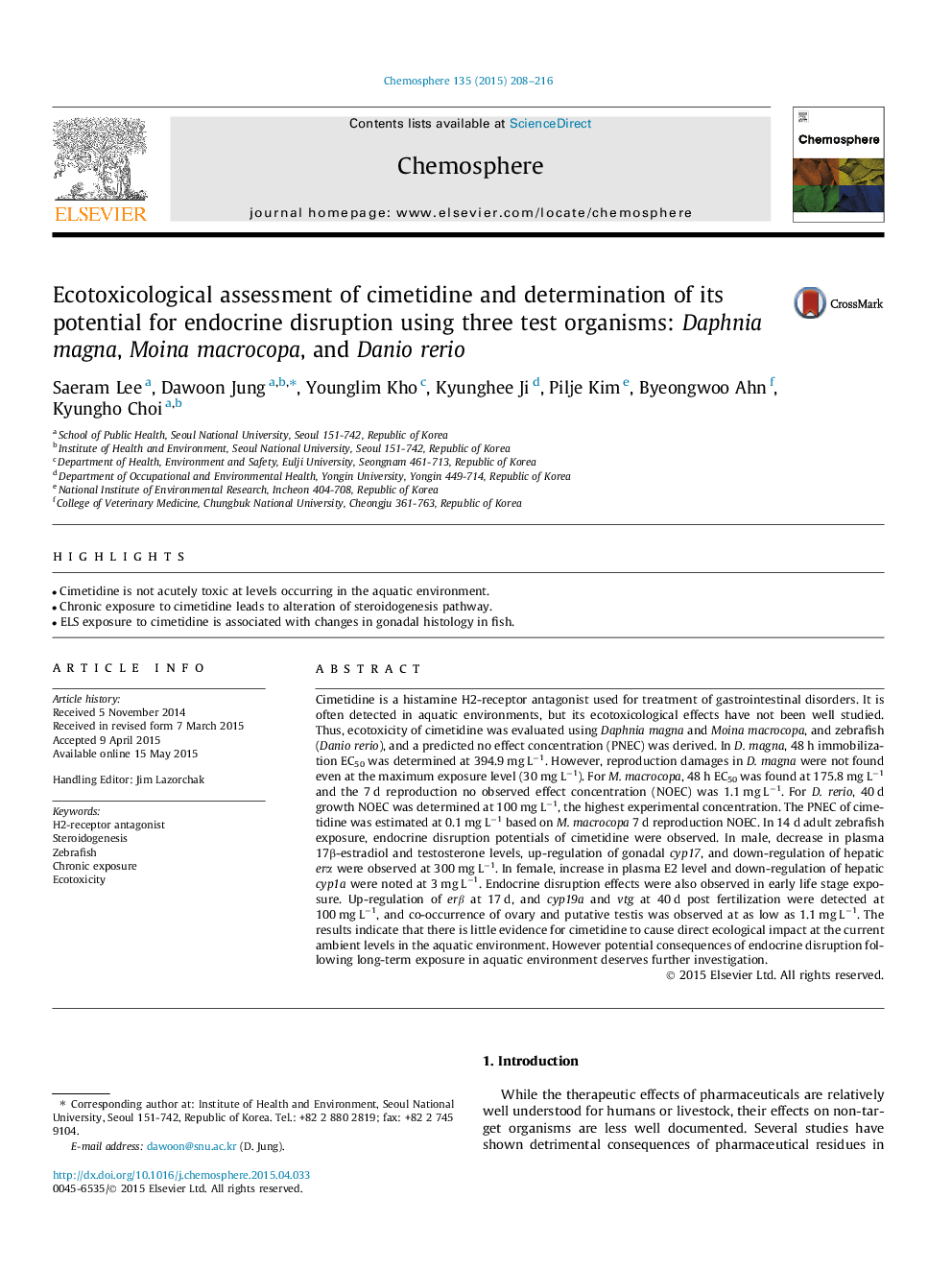| Article ID | Journal | Published Year | Pages | File Type |
|---|---|---|---|---|
| 6307838 | Chemosphere | 2015 | 9 Pages |
Abstract
Cimetidine is a histamine H2-receptor antagonist used for treatment of gastrointestinal disorders. It is often detected in aquatic environments, but its ecotoxicological effects have not been well studied. Thus, ecotoxicity of cimetidine was evaluated using Daphnia magna and Moina macrocopa, and zebrafish (Danio rerio), and a predicted no effect concentration (PNEC) was derived. In D. magna, 48 h immobilization EC50 was determined at 394.9 mg Lâ1. However, reproduction damages in D. magna were not found even at the maximum exposure level (30 mg Lâ1). For M. macrocopa, 48 h EC50 was found at 175.8 mg Lâ1 and the 7 d reproduction no observed effect concentration (NOEC) was 1.1 mg Lâ1. For D. rerio, 40 d growth NOEC was determined at 100 mg Lâ1, the highest experimental concentration. The PNEC of cimetidine was estimated at 0.1 mg Lâ1 based on M. macrocopa 7 d reproduction NOEC. In 14 d adult zebrafish exposure, endocrine disruption potentials of cimetidine were observed. In male, decrease in plasma 17β-estradiol and testosterone levels, up-regulation of gonadal cyp17, and down-regulation of hepatic erα were observed at 300 mg Lâ1. In female, increase in plasma E2 level and down-regulation of hepatic cyp1a were noted at 3 mg Lâ1. Endocrine disruption effects were also observed in early life stage exposure. Up-regulation of erβ at 17 d, and cyp19a and vtg at 40 d post fertilization were detected at 100 mg Lâ1, and co-occurrence of ovary and putative testis was observed at as low as 1.1 mg Lâ1. The results indicate that there is little evidence for cimetidine to cause direct ecological impact at the current ambient levels in the aquatic environment. However potential consequences of endocrine disruption following long-term exposure in aquatic environment deserves further investigation.
Related Topics
Life Sciences
Environmental Science
Environmental Chemistry
Authors
Saeram Lee, Dawoon Jung, Younglim Kho, Kyunghee Ji, Pilje Kim, Byeongwoo Ahn, Kyungho Choi,
